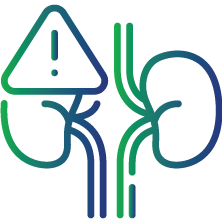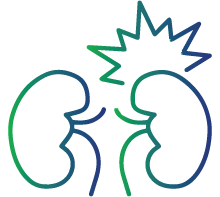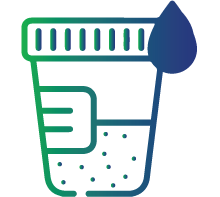
Iron, 24-hour Urine Test
Iron, 24-hour Urine Test
Iron is an essential dietary mineral that the body uses to produce hemoglobin, a protein in red blood cells that carries oxygen throughout the body. Behaving this way, iron is a lifesaver. However, like many other nutrients, it is toxic in higher quantities and contributes to free radical (FR) development in various organs, leading to organ damage and dysfunction.
People lose small amounts of iron daily, largely through their faces, with a minor percentage lost via urine and sweat. However, in patients with systemic iron overload disorders, such as hemochromatosis, iron released during red blood cell lysis is constantly deposited in kidney tissues for the long term, causing renal injury. This results in a higher-than-normal urine iron excretion rate, known as hemosiderinuria.
Individuals with hemosiderinuria produce "brownish"-colored" urine.
The Iron 24 hour Urine test is a diagnostic tool that measures iron levels in urine collected over 24 hours. It helps detect patients with kidney issues due to iron overload and determine when chelation therapy must begin and the regimen to be adopted.
What is the Iron 24-Hour Urine Test For?
The Iron 24-hour urine test is used

To identify patients most at risk of iron mediated kidney damage

To modulate patients' response to chelation therapy for optimal dose adjustment and evaluate the loss of other elements such as zinc
Symptoms of Iron overload
Symptoms of iron overload can overlap with other conditions, with some people not manifesting any signs for many years. However, some common symptoms include

Weight Loss

Feeling tired or weak

Joint pain

Pain in the kidney

Urinating either too much or too little

Excessive thirst

Blood in the urine

Swelling (edema) in legs and feet

Chronic Kidney disease (in severe cases)
Preparation for Test
No specific preparation is necessary before taking an Iron 24-hour urine test. However, follow all your doctor's instructions if you are on medications or have some allergies or underlying medical conditions.
Interpretation of Test Results
Positive results (Abnormal)
This report suggests higher iron levels in urine (hemosiderin), possibly due to iron overload diseases or long-term intravascular hemolysis (breakdown of RBC inside blood vessels).
Negative result
This report indicates very low to negligible levels of iron in urine and may not require any medical intervention.
FAQs
How is the Iron 24-hour Urine test performed?
Your doctor will give you a sterile container for urine collection to perform this test. Begin by discarding the first urine in the morning after emptying your bladder. Then, whenever you go to the bathroom, collect the urine samples and note the time. Repeat this process for 24 hours. Store all the collected samples in the refrigerator as instructed until you submit them to the laboratory.
How will this test feel?
Since the test involves only normal urination, there is no discomfort.
What should I do if I have high iron levels in my urine?
If you have high iron levels in your urine, consult your doctor for further evaluation and management. They may recommend additional tests to determine the underlying cause of your situation and probably suggest appropriate treatment options.
How much iron is lost in urine in normal circumstances?
The daily iron loss from urine is about 1mg/day or less. This basal loss may drop to 0.5 mg/day if a person has an iron deficiency and may spike to 2 mg/day if a person suffers from iron overload syndrome.
What conditions can cause iron overload?
Iron overload is majorly caused due to hemochromatosis, a genetic disorder that increases iron absorption. But it can also happen when people take too many iron supplements, receive repeated blood transfusions, or have a disorder characterized by excess breakdown of red blood cells.

